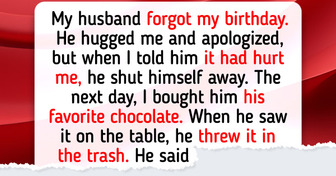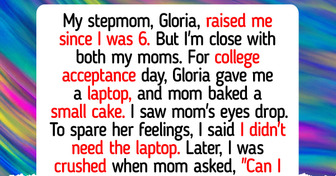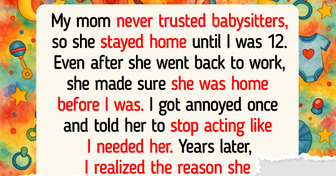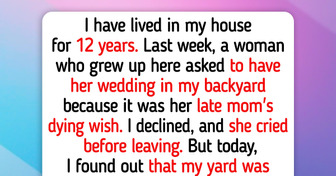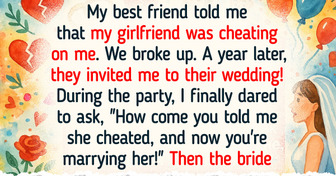Heidi Klum’s Rarely Seen Son Makes Runway Debut—Fans Notice the Same Thing
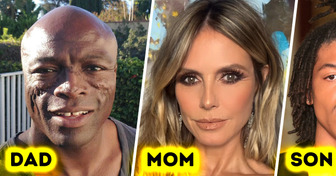

In movies, the attire of characters often serves as a silent storyteller, telling us more about them than we realize. Costume designers sneak in little details that add layers to the story and give us insights into who these characters really are.
Costume designer Ruth Myers had a vision for the Addams family to exude aristocratic elegance. To achieve this, the family matriarch adhered to a routine of changing outfits three times a day. Starting with a simple dress in the morning, she’d transition to something more exotic during the day, culminating in her most extravagant attire by evening. As night fell, she’d be adorned with lace and black jewels, epitomizing the family’s refined and sophisticated style.
Costume designer Deborah Lynn Scott had a specific vision for the colors of the main character’s dresses to reveal more about Rose’s personality: at her core, she was a woman of strength and determination. The bold red dress, adorned with black lace, symbolized her resilience within the confines of societal norms. Interestingly, Rose wears the same dress both at the beginning and the end of the film, albeit in different colors.
In the final scene, Rose dons the same dress, now in white. While the design remains unchanged from the one she wore when she first met Jack, the color shift signifies the absence of barriers to their love.
In The Chronicles of Narnia: The Lion, the Witch, and the Wardrobe, a significant detail symbolizing the White Witch’s decline in power is her crown. As she begins to lose her grip, the crown gradually melts and shrinks in size, visually representing her diminishing authority and influence.
In the latest movie rendition, Princess Jasmine’s wardrobe is a colorful reflection of her character. Her signature bright turquoise ensemble, now adorned with intricate beadwork, remains iconic. Her veil features a striking peacock design, serving as a metaphor for her desire for freedom and independence, much like the peacock trapped in the royal garden.
Moreover, Jasmine’s attire distinguishes her from the other characters, particularly her vibrant pink outfit, which pays homage to her Southern Asian heritage. Despite the introduction of numerous new outfits, costume designer Michael Wilkinson ensured that Jasmine’s classic turquoise look remained a staple, preserving the familiarity that audiences associate with the beloved character.
Historical dramas like Pride & Prejudice often rely on subtle details due to societal constraints that inhibit open declarations of love or passion during that period.
Costume designer Jacquelina Durran ingeniously captures Mr. Darcy’s evolution by having him shed layers of clothing as the movie unfolds. This subtle visual cue, combined with the softening of materials, reflects Mr. Darcy’s journey toward openness and humility. It’s a clever representation of his shift from rigidity to adaptability
In Suicide Squad, Harley Quinn’s outfit mirrors Joker’s, while in Birds of Prey, it reflects her character’s growth. Costume designer Erin Benach ensures Harley has freer movement on the battlefield by opting for looser attire. Gone are the skimpy shorts from Suicide Squad, replaced by a more comfortable ensemble in Birds of Prey. Beyond mere comfort, this wardrobe change symbolizes Harley’s liberation from her abusive lover. It represents her newfound independence and ability to make choices, including her clothing, without the influence of a romantic partner.
Although Stephenie Meyer, the writer of Twilight, didn’t mention much about the Cullen family crest, the filmmakers decided to include it in the characters’ looks. They added some accessories like leather bracelets for Emmett, Jasper, and Edward on their right hands, a big pendant for Rosalie, a necklace for Alice, a silver ring with an engraving for Carlisle on his left hand, and a silver bracelet for Esme. These items show how important family is to the Cullens.
To highlight the special bond between Sophie and Donna, costume designer Michele Clapton cleverly incorporates the butterfly symbol. During her childhood, Donna wore a butterfly-shaped pendant, and Sophie honors her mother’s memory by wearing a dress adorned with butterflies to the church. This subtle detail reveals the heartfelt connection between mother and daughter
Ransom is portrayed as a wealthy and pampered individual who neglects his appearance. His clothing reflects this disregard, with his beige sweater bearing holes and showing signs of wear and tear on the collar and cuffs. This unkempt attire serves as a clear indicator of Ransom’s lack of respect for both money and the people who provide it to him, which is his family.
Queen Ingrith is depicted as a character of pure villainy. However, costume designer Ellen Mirojnick opts not to rely on color to emphasize this trait, as the queen is consistently seen in light-colored attire. Instead, Ingrith’s personality nuances are conveyed through her choice of jewelry. For instance, during her initial appearance, she dons a white dress adorned with numerous pearl necklaces. These intricate details of Michelle Pfeiffer’s wardrobe subtly hint at the queen’s deep-seated affection for wealth and power.
At the start of the movie, Christine blends in with the other dancers, dressed in a cream-colored top adorned with gold details. Despite the partial nudity, her attire doesn’t set her apart from the rest of the group.
However, as the story progresses, Christine undergoes a noticeable transformation. Her new wardrobe covers less of her body but commands the attention of everyone in the audience. This shift in clothing reflects Christine’s changing status within the acting group. No longer just another dancer, she emerges as a star in her own right.
In The Help, the servants are confined to dull uniforms throughout the workweek, deprived even of wearing earrings. In the eyes of their masters, they are indistinguishable. However, during weekends or special occasions like church, they shed these uniforms, revealing their true selves.
Madame Céline Villeneuve Desgoffe und Taxis’ wardrobe is a purposeful blend of various historical eras. Her ensemble features a red coat and hat reminiscent of the 1920s, a dress harkening back to the 1930s, and a hairstyle reminiscent of La Belle Époque. This eclectic mix of styles suggests that Madame D. is unable to escape her past and hints at a touch of eccentricity or instability in her character.
Throughout the film, Laurie and Jo consistently don matching vests, symbolizing their deep bond and special connection.
Additionally, costume designer Jacqueline Durran, along with actress Saoirse Ronan, crafted a unique outfit for Jo. Whenever she is immersed in her writing, Jo dons a green jacket, symbolizing her decisiveness and indomitable spirit.
At the outset of the film, snippets from Tom’s and Summer’s childhoods establish a strong connection: Tom’s scenes are tinged with brown hues, while Summer’s are characterized by blue tones. As Summer enters Tom’s life, blue becomes a prominent color in his surroundings. For instance, during a scene where he joyously dances amidst a sea of people clad in blue attire. This visual cue signifies Tom’s preoccupation with thoughts of Summer and his burgeoning feelings of love.
We’re all aware of the dramatic impact that visual effects have on movies. In this article, we’ve explored behind the scenes of our favorite films to witness their raw form without the magic of computer graphics.

